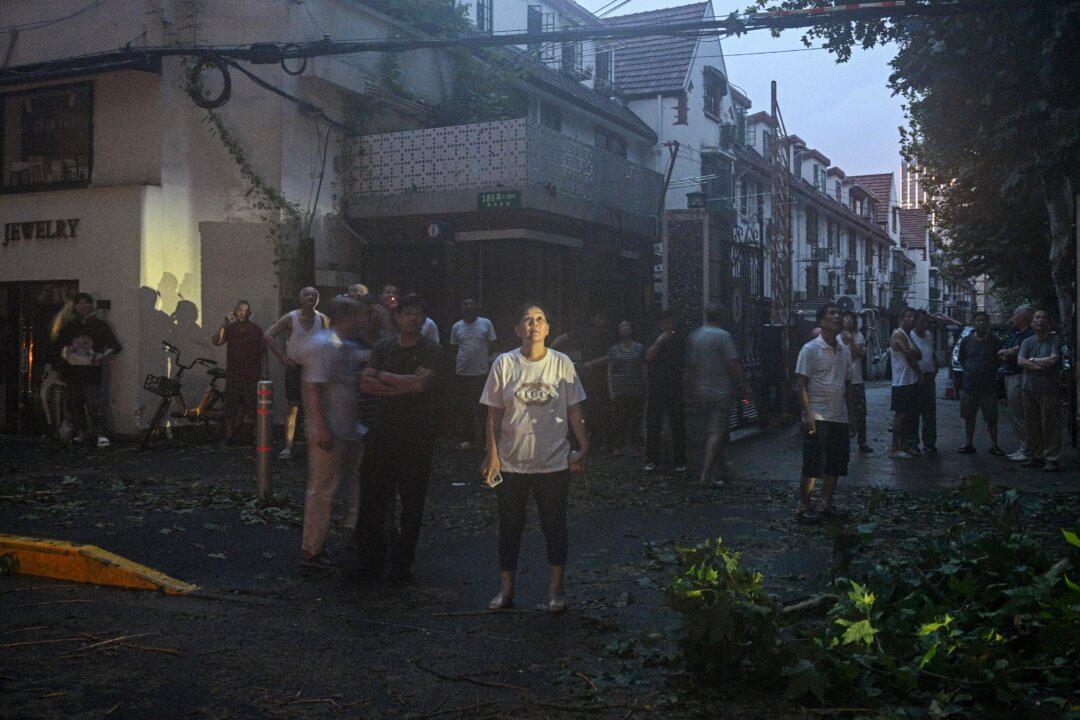Typhoon Bebinca hit Shanghai on Sept. 16, bringing the financial hub to a standstill.
Bebinca was a Category 1 storm when it made landfall at about 7:30 a.m. local time and is the most powerful tropical cyclone to reach the city since 1949, the year of the Chinese communist revolution, with top wind speeds of 94 miles per hour near its center.





